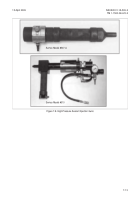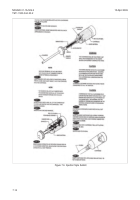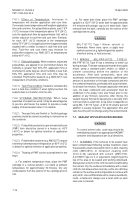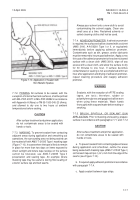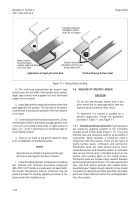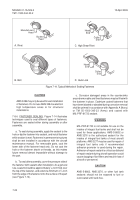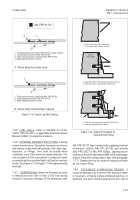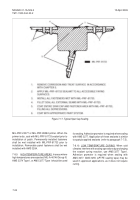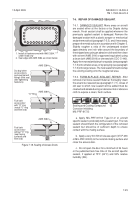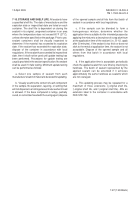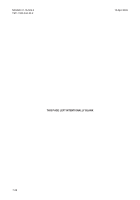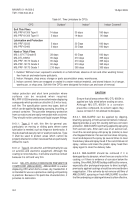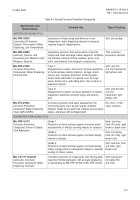TM-1-1500-344-23-2 - Page 138 of 240
7-22
NAVAIR 01-1A-509-2
TM 1-1500-344-23-2
15 April 2009
CAUTION
AMS 3284 may only be used for wet installation
of fasteners. Do not use AMS 3284 sealants in
high temperature areas or for structural
installations.
7-8.4. FASTENER SEALING. Figure 7-14 illustrates
techniques used to seal different types of fasteners.
Fasteners are sealed either during assembly or after
assembly.
a. To seal during assembly, apply the sealant to the
hole or dip the fastener into sealant, and install fastener
while sealant is wet. Fasteners in permanent structures
shall be wet installed in accordance with the aircraft
maintenance manual. For removable parts, coat the
lower side of the fastener head only. Do not coat the
hole or the fastener shank or threads, as this makes
future removal almost impossible without damage to
the part.
b. To seal after assembly, cover the pressure side of
the fastener with sealant after installation. As a general
rule, sealant should be approximately
1
⁄
8
inch thick over
the top of the fastener, and extend a minimum of
1
⁄
4
inch
from the edge of the fastener onto the surface of the part
(see Figure 7-14).
c. Corrosion damaged areas in the countersinks
around removable and fixed fasteners may be filled with
the fastener in place. Cadmium coated fasteners that
have been blasted or abraded during corrosion removal
shall be primed in accordance with Appendix A (Navy)
or TM 55-1500-345-23 (Army) and coated with
MIL-PRF-81733 sealant.
WARNING
MIL-PRF-81733 is not suitable for use on the
insides of integral fuel tanks and shall not be
used for these applications. AMS-S-8802 or
AMS 3276 is the authorized sealant for the
insides of integral fuel tanks of most aircraft
platforms. AMS 3277 may be used for repair of
integral fuel tanks only if recommended
adhesion promoter is used during the repair.
Adhesion of repair sealant is critical as disbond
of repair sealant during aircraft operation could
cause clogging of fuel filters and result in loss of
aircraft or personnel.
CAUTION
AMS-S-8802, AMS 3276, or other fuel tank
sealants should not be exposed to fuel or
overcoated until tack-free.
Figure 7-14. Typical Methods of Sealing Fasteners
A. Rivet
C. High Shear Rivet
B. Bolt
D. Huck Lock
Head
End
Collar
End
Head
End
Collar
End
Manufactured
Head
Bucked
Head
Back to Top


